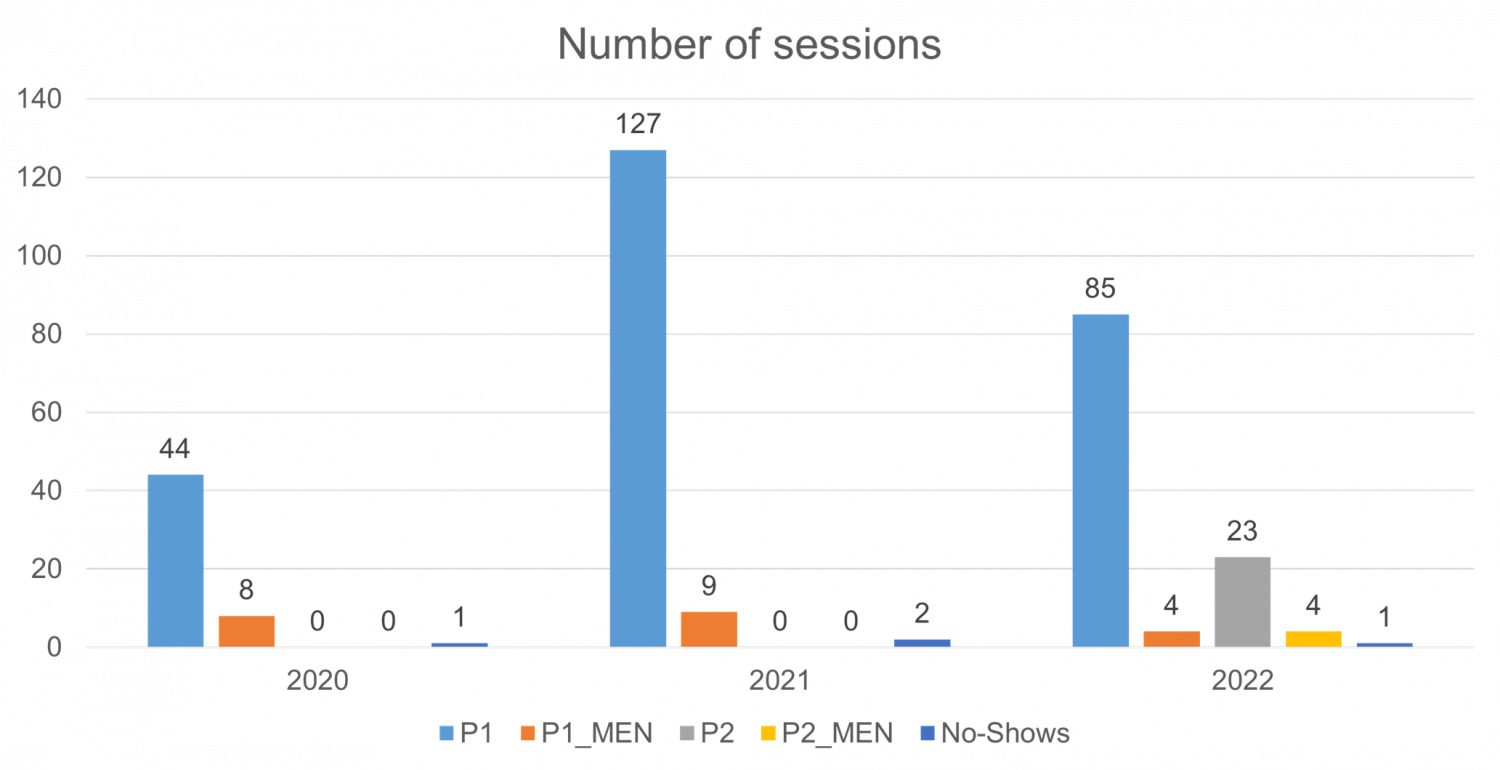Modernising and Updating the P1 PPL(A)
Background ✈️
Our P1 PPL(A) course was released on 18 September 2020 and the course has remained largely unchanged since release, besides a few clarifications on lessons and shifting a lesson or two around. In that time, we have produced 11 P1 ratings and have conducted 270 mentoring sessions (as of 23 February 2023). However, recent discussions have highlighted the need for some major changes to the P1 course.
Why is change necessary? 🔍
The Waiting List
It is well known that the P1 waiting list is exorbitant. As of 23 February 2023, the eligible waiting list has 152 members and the ineligible waiting list has a further 252 members. For our purposes, eligible means the member has notified us that they have completed the Moodle course. The oldest join date on the eligible list is still October 2020.
While this is significantly shorter than say the OBS-PT1 waiting list, Pilot Training has a much smaller team. Considering the current team size of around 6 mentors, the waiting list is simply too long and borderline unmanageable.
What have we done about this?
In December 2022, I took the executive decision to close the P1 waiting list until we had devised a concrete plan forward for the P1 and were able to start reducing our deficit. This closure will end when my team and I deem it suitable.
In addition to this, we have decided to email every member on the waiting list to ask two questions:
- Are you still interested in the P1 PPL(A) course?
- Would you prefer the offering in The Flying Programme to get you flying on the network?
Members who do not respond within 7 days will be removed from the waiting list.
Mentors
One of our biggest concerns within the P1 PPL(A) course is mentor retention. The number of active mentors in the course seems to fluctuate throughout the year but generally averages in the 4-7 range. As of 23 February 2023, 7 mentors besides myself and Dale have conducted at least 1 P1 PPL(A) session in the past 90 days.
Why do mentors leave?
This is a difficult question to answer, but we have narrowed it down to a few possibilities:
- From our experience, P1 PPL(A) mentors tend to come from two streams: real-world pilots, and members who have completed the course themselves. In both cases, these members are generally older and have more real-world responsibilities. As such, some leave as they can no longer give time to mentor on VATSIM.
- The waiting list is demotivating to mentors. If a mentor gives 12 sessions to get a student through the course, this seemingly makes no dent in the large backlog of the waiting list. As such, the time invested seems to be undervalued.
- There is no motivation or reason for mentors to give us sessions, as we have no reward to offer besides community engagement and a fast track to the next rating. This differs from ATC Training, which offers the C3 rating and various staff positions which get rotated through at a higher rate.
- The course is long and tedious to mentor in its current state. As a mentor, I am reluctant to pick up theory sessions as it takes a lot of energy to go through all the relevant theory with little backing from the course (and from .net) on how in-depth to go. Additionally, teaching theory for an hour directly before a flight makes sessions last upwards of 2 hours, which is draining and unnecessary.
Three-Year Statistics
The statistics compiled during Q4 2022 reveal some interesting trends which partly triggered our further analysis into the effectiveness of the course in its current state.
Sessions per Quarter

During Q4 2020, the P1 PPL(A) course had 44 sessions conducted in its launch quarter. Over 2021, the course averaged 32 sessions per quarter, with 50, 37, 24, and 16 sessions for each quarter respectively. 2023 maintained an again-lower average of 21 sessions per quarter.
What does this mean?
Simply put, the course is “settling down”. While this does mean we are seeing a more consistent amount of mentoring per quarter, it also indicated a distinct lack of growth as the course progresses. This can be seen with the session per year.
Sessions per Year
When analyzing this data, we must factor in that 2020 consisted of only one quarter. Thus, a conservative projection for a full year at that rate would yield 165 sessions (derived from 44 x 3.75).
This shows a year-on-year decline in the number of sessions of 23% for 2020-2021 and 33% for 2021-2022.
What does this mean?
While we can look at the relaxing of lockdown and COVID-19 restrictions worldwide for the net decline in sessions, the distinct lack of intrinsic growth is noteworthy. While we are putting people through the course (see the next session for exam information), they are not staying around and mentoring for long enough to create growth.
This shows that the course has a negative feedback loop – we do not get enough mentoring back from our past students to each get a new student through the course, and thus we are investing time into a course that isn’t producing. This can explain some of the points highlighted in the above section on Mentors.
Exam Statistics per Year
2022 showed a decline in several key areas for the students we passed through the course.
Firstly, the number of exams (and thus exam passes) decreased. More alarmingly, however, the number of sessions and days since the training places awarded both increased substantially. This allows us to create two new figures: average time between sessions and effective sessions per 30-day period. Both metrics also showed significant decreases.
What does this mean?
The decrease in exams conducted in the year and the increase in time between sessions indicates that students are taking significantly longer to complete the same course compared to 2021. Allowing this to continue will simply exacerbate the situation, furthering the negative feedback loop. These figures also confirm the apparent intrinsic decline of the course compared to 2021, as seen in the quarterly and yearly statistics.
Mentor Conversion Rate
Due to the small number of exams conducted per year, it is easier to look at the mentor conversion rate for the overall course.
As of 23 February 2023, 7 out of 11 exam passes became mentors or a conversion rate of 63.7%. While this seems reasonable at a surface level, we must also consider the following: of these 7 mentors converted, only 3 have conducted a session in the last 90 days with the 3rd being Dale, our VFR FI. Looking at this adjusted number, and removing the sessions conducted by the VFR FI, we now see an effective conversion rate of 20% (2/10).
This reflects the fundamental problem with the P1 PPL(A) course: we cannot put members through fast enough to become mentors who can contribute a similar amount of mentoring back to the department.
How are we addressing these issues? 🏗️
Course Changes
In its current state, the P1 PPL(A) consists of 23 lessons, of which 5 are self-study. This means that, in theory, each student needs to conduct 18 one-on-one sessions to pass the course. Referring to the 2021 and 2022 exam statistics, we indeed see an average sessions-to-pass of 16-18 sessions. To put it simply, this is unnecessarily long.
After some careful planning, Dale and I have come up with the following changes to the course content:
- The course will now be streamlined to 18 lessons, of which 7 are self-study. This means there will only be 11 lessons for mentors to teach.
-
This is a major change for 2 reasons:
- The course is now 39% shorter. With the same amount of mentoring resources, we can achieve almost 1.5 times the output.
- Tedious, theory-only lessons will be completely replaced by self-study lessons. This further reduces the strain on our mentors.
- Every lesson will have a text and/or briefings for the theory content in that lesson. Thus, even for one-on-one sessions, the mentor is not expected to teach all the theory in addition to flying with the student. The immediate effect of this is shorter lessons, with most expected to last 1 to 1.5 hours, instead of the current 1.5 to 2.5 hours.
- Each lesson with have a short, open-book preflight quiz on the content of the briefing.
- Each section of the course will be ended with a solo revision flight to be flown using the smartCARS system. Students will be given a specific set of instructions for each solo flight, which will specify the maneuvers, circuit joins, and approach types to be flown.
A large part of the changes involves considering what needs to be taught by a mentor and what can be given as self-study with appropriate quizzes. In the current change set, there have been no changes to the course content, only in the way it is delivered to students. However, we will now be able to adjust content as needed for further streamlining, or compliance with .net specifications.
How can I get involved? 🤝
Changes to the P1 will require a sizeable effort from Pilot Training to implement. As such, we would like to invite the community to get involved with the project. Some of the skills we are looking for include:
- Video lesson recording
- Video editing
- Writing of text briefings
- FTE creation
I do not hold a pilot rating
Are you looking to improve your video editing skills with a short project? We need members to help edit full video lessons, as well as shorter videos for briefings.
Have a spare hour to kill and want to get the data for an FTE? Please let us know!
I hold a pilot rating
We need members who are familiar with PPL theory to write briefings for the new lessons. If you feel you have the knowledge to contribute, even if it’s just a section of a briefing, then please get in touch!
Have a decent computer and can produce raw videos for video lessons? We’d like to work with you!
How do I get in contact?
To help keep track of who has expressed interest, we ask that you make a ticket via the Helpdesk addressed to Pilot Training.
If you would like to discuss any issues with myself or Dale directly, feel free to reach out via Discord.
Edited by Darren Hill




0 Comments
Recommended Comments
There are no comments to display.
Please sign in to comment
You will be able to leave a comment after signing in
Sign In Now